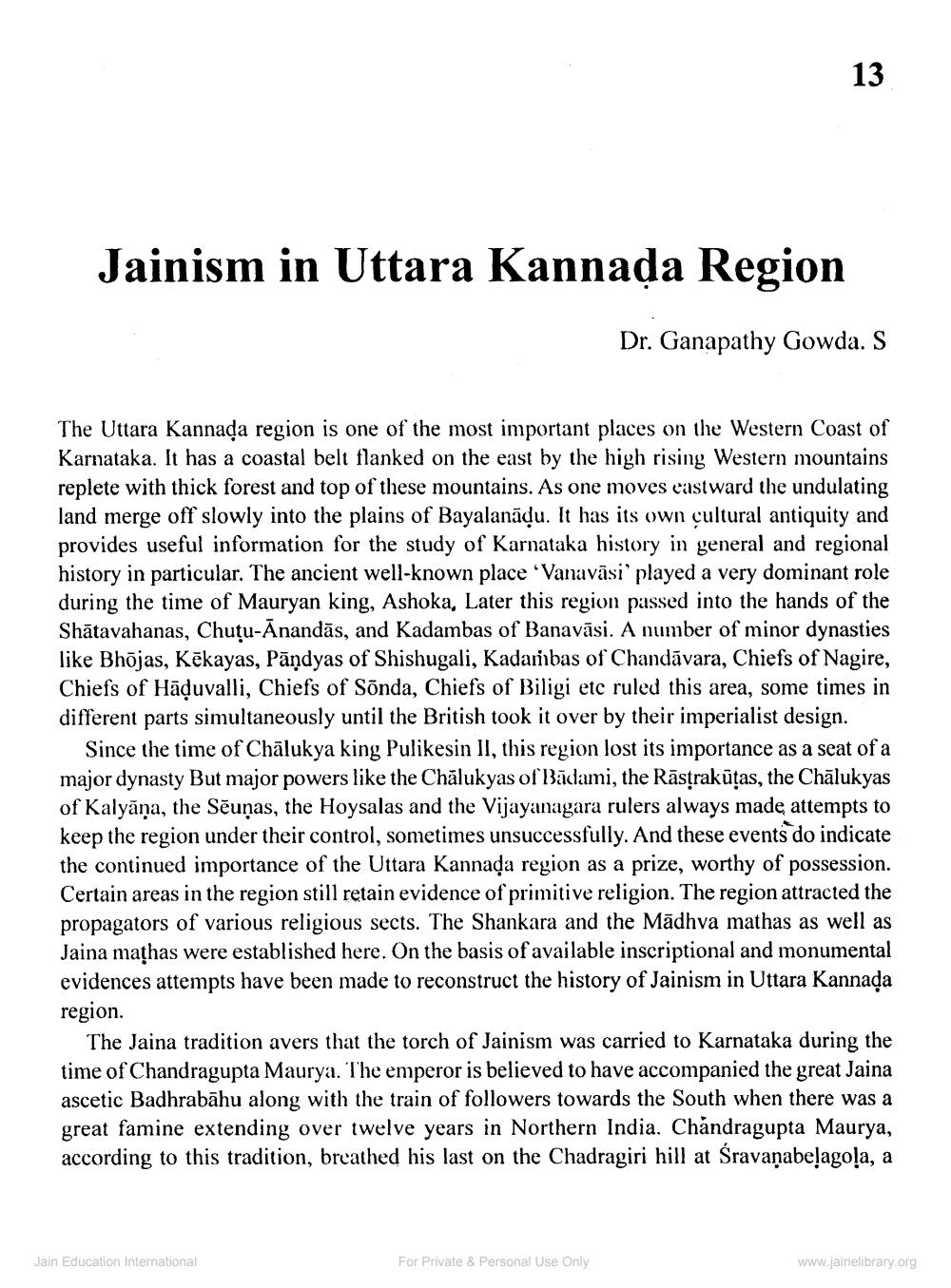________________
Jainism in Uttara Kannada Region
Dr. Ganapathy Gowda. S
The Uttara Kannada region is one of the most important places on the Western Coast of Karnataka. It has a coastal belt flanked on the east by the high rising Western mountains replete with thick forest and top of these mountains. As one moves eastward the undulating land merge off slowly into the plains of Bayalanādu. It has its own cultural antiquity and provides useful information for the study of Karnataka history in general and regional history in particular. The ancient well-known place 'Vanavāsi' played a very dominant role during the time of Mauryan king, Ashoka, Later this region passed into the hands of the Shātavahanas, Chutu-Anandās, and Kadambas of Banavāsi. A number of minor dynasties like Bhöjas, Kēkayas, Pāņdyas of Shishugali, Kadarbas of Chandāvara, Chiefs of Nagire, Chiefs of Hāduvalli, Chiefs of Sõnda, Chiefs of Biligi etc ruled this area, some times in different parts simultaneously until the British took it over by their imperialist design.
Since the time of Chālukya king Pulikesin II, this region lost its importance as a seat of a major dynasty But major powers like the Chalukyas of Bādami, the Rāstrakūtas, the Chālukyas of Kalyāņa, the Sěuņas, the Hoysalas and the Vijayanagara rulers always made attempts to keep the region under their control, sometimes unsuccessfully. And these events do indicate the continued importance of the Uttara Kannada region as a prize, worthy of possession Certain areas in the region still retain evidence of primitive religion. The region attracted the propagators of various religious sects. The Shankara and the Madhva mathas as well as Jaina mathas were established here. On the basis of available inscriptional and monumental evidences attempts have been made to reconstruct the history of Jainism in Uttara Kannada region.
The Jaina tradition avers that the torch of Jainism was carried to Karnataka during the time of Chandragupta Maurya. The emperor is believed to have accompanied the great Jaina ascetic Badhrabāhu along with the train of followers towards the South when there was a great famine extending over twelve years in Northern India. Chandragupta Maurya, according to this tradition, breathed his last on the Chadragiri hill at Sravanabelagola, a
Jain Education International
For Private & Personal Use Only
www.jainelibrary.org




